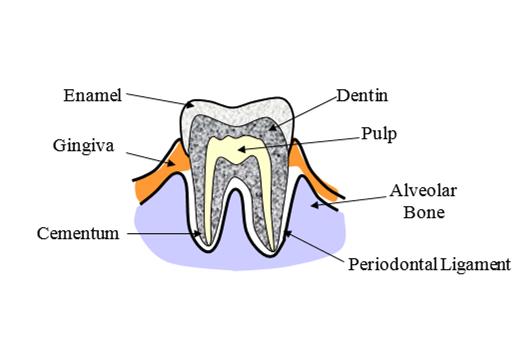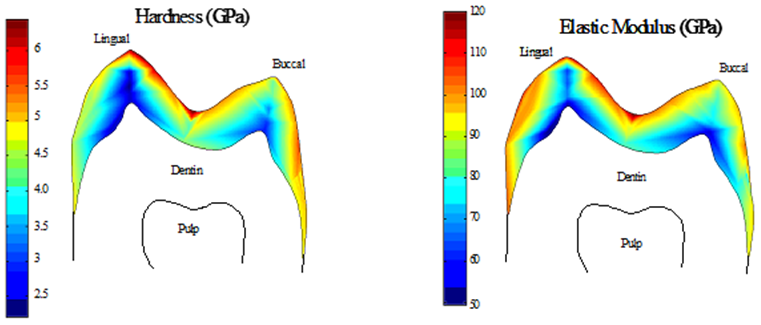Over the last two decades we have studied the mechanical properties of teeth: the hard outer covering of enamel and to a lesser degree the softer mid-layer of dentin. We have found significant variations in the hardness and stiffness of human molar enamel, and we have correlated these changes with trends in the local chemistry and organic content. In addition, we have identified similar trends in monkey teeth and human incisors.
Over the last two decades we have studied the mechanical properties of teeth: the hard outer covering of enamel and to a lesser degree the softer mid-layer of dentin. We have found significant variations in the hardness and stiffness of human molar enamel, and we have correlated these changes with trends in the local chemistry and organic content. In addition, we have identified similar trends in monkey teeth and human incisors.

As noted above, teeth are composed of a hard outer covering of enamel, a mid-layer of softer dentin, and an inner layer of pulp (which contains the nerve and blood supply that maintain the vitality of the tooth) (Figure 1). The various layers of teeth can be considered different materials and have different functions, structures, and properties. In addition, teeth located in different positions of the mouth have different forms and functions. The objective of this research has been to characterize variations in the mechanical properties, microstructure, and chemistry of human enamel at different locations in the tooth and in different tooth types and determine the source of the variations in mechanical properties. Examples of variations in the hardness and elastic modulus of enamel found in a human second molar is shown in Figure 2. These values were obtained by performing several thousand nanoindentations into a polished cross-section of a human second moalar and extracting and smooth the resulting force-displacement data. Beyond human teeth we are also working to determine if similar variations in the mechanical properties, microstructure, and chemistry are present in the teeth of other species with different diets and from different environments. In particular, we have worked with Dr. Mark Teaford to study the teeth of Alouatta palliate. Samples were obtained through on-going work at Hacienda La Pacifica, Guanacaste, Costa Rica (Teaford and Glander, 1991, 1996).

